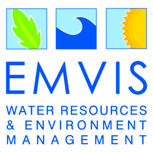“…even if all the other building blocks of effective conservation are in place, we will not succeed unless the general public cares, and they are unlikely to care enough if they no longer experience nature directly.”*
There’s a certain irony that World Environment Day, on June 5th, comes only a few days after the United States withdrew its support for the Paris Climate Agreement. Failure to address climate change will have severe consequences for the environment and the ecosystems World Environment Day was established to celebrate.
Other nations will take the lead on climate and, encouragingly, seventy per cent of Americans care enough about environmental sustainability to support remaining in the Paris Agreement. Better still, cities across the United States have redoubled their commitment to address climate change, and will have a decisive role in preserving natural ecosystems, even beyond city limits.
In 2015, just over half of the world’s population was residing in urban areas. This is expected to rise to 66 per cent by the year 2050, driven by urban growth in Africa and Asia. Billions of people will be living, disconnected from nature, in urban jungles and in the rapidly expanding, ill-equipped peri-urban fringes of cities. The processes of global urbanization are resource intensive and interlinked with environmental degradation and pollution.
It doesn’t have to be this way, and it shouldn’t be this way. The positive effects of integrating water and vegetation (blue and green) spaces into urban areas include reduced public health expenditures; increased social connection; and heightened consciousness about the environment, needed to elevate support for addressing climate change[i]. World Environment Day offers an opportunity to highlight these positives, and to promote more liveable cities.
One way of doing this is to get a bird’s eye view of our cities and the surrounding natural environments. Satellite data is increasingly being used to do just that, looking at the surface environment and to assess environmental parameters. Citizens can explore the state of the environment in and around their cities by using applications such as Google Earth, which uses a variety of open access satellite data.
More in depth analysis of satellite information is being used by governments, to inform environmental policies and regulations; industries and water utilities can use such data to inform the investment in natural resources upon which they depend.
For example, urban water utilities that invest in their wider catchments can benefit from higher quality raw water entering water treatment facilities, reducing the chemicals and energy needed to treat it to potable standards. SPACE-O, a project funded by the European Union’s Horizon 2020 Research and Innovation Programme, aims to provide information on water quality problems in reservoirs and lakes upstream to end users such as water treatment facilities.
SPACE-O does this through approaches such as short-term water quality forecasting information, that lets the treatment plants know about potential problems such as turbidity and algal blooms in advance. This information comes from integrating state-of-the-art satellite technology and in-situ monitoring with advanced hydrological, water quality models and ICT tools, into a powerful decision support system.
Empowering citizens to take action and collect data to assist utilities in improving water quality and supply, helps increase consciousness about the environment and enables collective action against climate change. Citizen science is also part of SPACE-O, and will provide citizens with a means to provide on the ground information and report problems. The positive spin-off of this approach is that citizens will be able to benefit from higher quality water in natural spaces beyond city limits.
I intend to answer the call of the wild for World Environment Day. I hope you do too! Let’s reconnect with nature to ensure that we never forget how important natural spaces are for all living things.
This blog was originally posted on the IWA network website. To read the original blog, click here.
___________________________________________________________________________________
* Balmford and Cowling, 2006
[i] Check out the Horizon 2020 research project BlueHealth for more insights on the benefits of blue spaces for human wellbeing: https://bluehealth2020.eu/
If you are interested in joining the discussion on the use of Earth Observation for Improved Water Management, visit our discussion group dedicated to the topic at the International Water Association’s IWA Connect. If you are not yet a member of IWA Connect, you can easily join as a network member for free here. Once you are logged-in, you can access the discussion group here.









